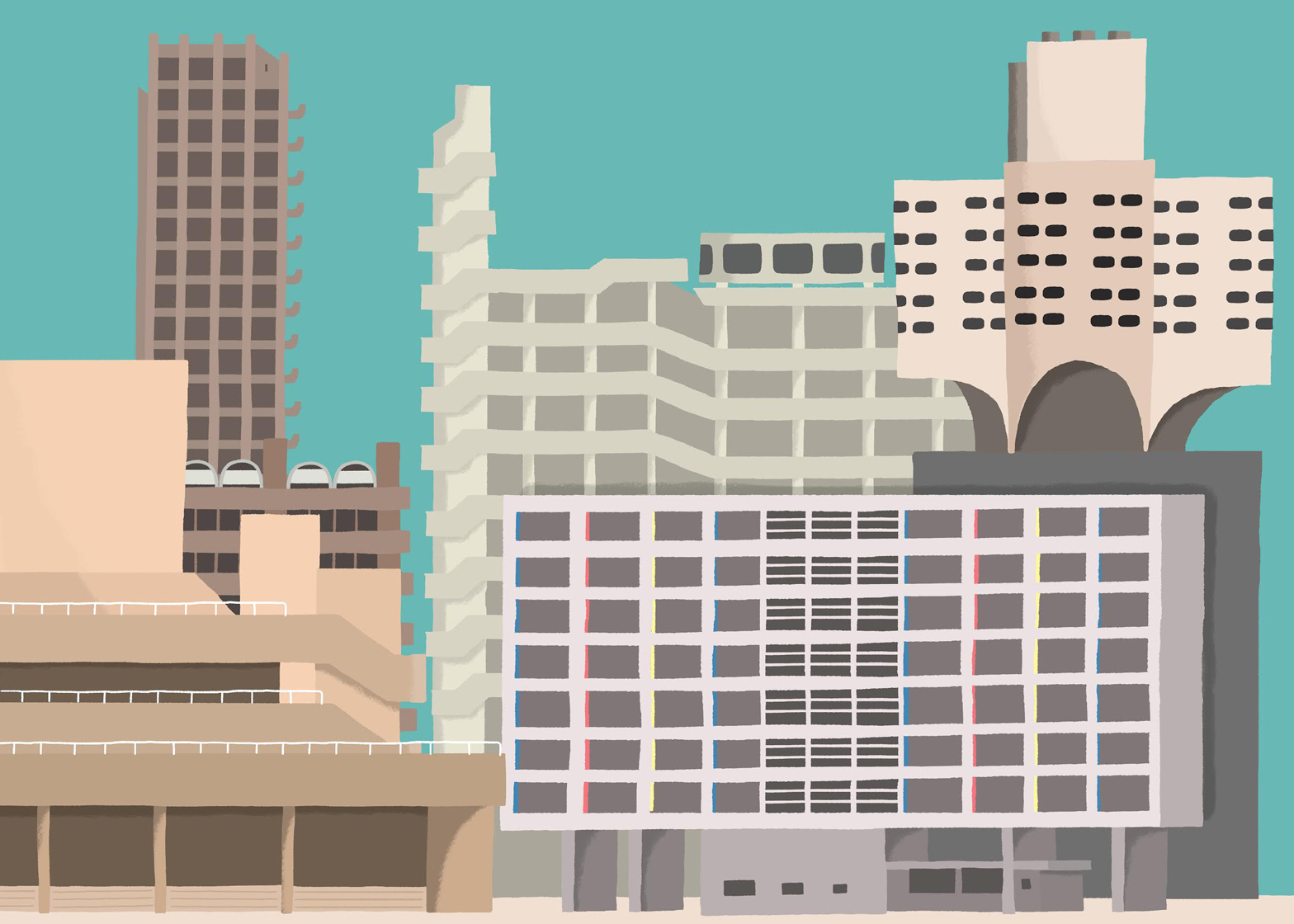Brutalism: explore all of the articles in our season dedicated to Brutalism, one of the 20th century's most controversial architecture movements.
The Dezeen guide to Brutalist architecture
Brutalism – one of the most vilified architectural styles of the last century – is back in vogue with design fans as nostalgia mixes with a new-found respect for its socialist principals and celebration of raw concrete.
Dezeen has collated an archive of key projects – including material never before published online and unique insights form the original architects. But first, here's a short introduction from the Royal Academy's Owen Hopkins. Read Dezeen's guide to Brutalism »
Architects pick their favourite Brutalist buildings
We asked architects including Kengo Kuma, David Adjaye and Amanda Levete to reveal their favourite buildings from the radical post-war movement. Find out what they picked »
11 lesser-known Brutalist buildings that helped define the movement
Dezeen invited Michael Abrahamson, editor of the F*ck Yeah Brutalism blog, to choose his favourite buildings. See the whole list »
"There was good Brutalism and bad, but even the bad was done in earnest": Jonathan Meades on Brutalist architecture
Challenging, idealistic and serious – Brutalism is architecture for grown ups, says British writer, author and broadcaster Jonathan Meades. Read his column »
The National Theatre, London, by Denys Lasdun
Denys Lasdun's National Theatre – one of London's best-known and most divisive Brutalist buildings – is a layered concrete landscape that Prince Charles once described as being like "a nuclear power station". Find out more about this building »
Prentice Women's Hospital, Chicago, by Bertrand Goldberg & Associates
The design for the clover-shaped tower of Bertrand Goldberg's Prentice Women's Hospital in Chicago was enabled by the pioneering application of one of the earliest three-dimensional modelling programmes. Find out more about this project »
Yale Art and Architecture Building, Connecticut, by Paul Rudolph
One of the earliest known examples of Brutalist architecture in America is Paul Rudolph's Yale Art and Architecture Building in New Haven, Connecticut, an imposing, fortress-like building that juxtaposes masses of textured concrete with layers of steel-framed glazing. Find out more about this building »
Balfron Tower, London, by Erno Goldfinger
As the precursor to the larger and more famous Trellick Tower, Ernö Goldfinger's Balfron Tower in east London was a testbed for the architect's utopian housing ideals. Find out more about this building »
Pilgrimage Church, Neviges, by Gottfried Böhm
One of the most revered religious buildings of the Brutalist period is Gottfried Böhm's Church of the Pilgrimage in Neviges, the crystalline structure that abandoned traditional Catholic architecture in favour of sharp angles and rough concrete. Find out more about this building »
Unitè d'Habitation, Marseille, by Le Corbusier
Le Corbusier's first Unité d'Habitation is arguably the most influential Brutalist building of all time. With its human proportions, chunky pilotis and interior "streets", it redefined high-density housing by reimagining a city inside an 18-storey slab block. Find out more about this project »
Trinity Square car park, Gateshead, by Owen Luder
The seven-storey Trinity Square car park in Gateshead, England, was designed by Owen Luder and became famous for featuring in the Michael Cain movie Get Carter, but was later demolished to make way for a retail development. Find out more about this building »
Barbican Estate, London, by Chamberlin, Powell and Bon
Described by Queen Elizabeth as "one of the modern wonders of the world", the Barbican Estate in London is one of the largest examples of the Brutalist style and represents a utopian ideal for inner-city living. Find out more about this project »
Preston Bus Station, Preston, by Building Design Partnership
Four rows of sculptural concrete fins make up the brazenly Brutalist facade of Preston Bus Station in Lancashire, England. Find out more about the building »
Habitat 67, Montreal, by Moshe Safdie
Presented by Moshe Safdie at the 1967 World Expo in Montreal as a vision for the future of cities, Habitat 67 broke the mould for experimental modular housing and is still popular with its residents. Find out more about this project »
Park Hill, Sheffield, by Jack Lynn and Ivor Smith
Dezeen revisits Park Hill – the housing estate that brought "streets in the sky" to Sheffield, England, after the second world war. Find out more about this project

